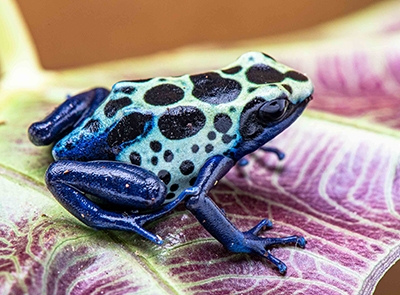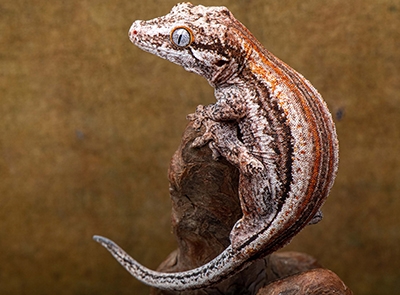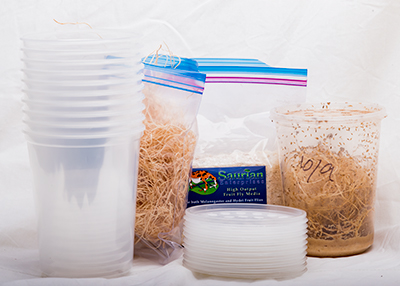FAQ and Care Sheets Section
To help with the care of your Dart Frogs, Frogs, Geckos, Isopods, and your terrarium setup in general, we’ve assembled a collection of care sheets (videos coming soon!), as well as customer and owner Frequently Asked Questions. If you don’t see the question or answer you’re looking for, please send us a message! We want to do everything we can to help you in maintaining and caring for your frogs, geckos, and terrariums.
Dart Frog General F.A.Q.
Are Dart Frogs Poisonous?
Contrary to popular belief, captive-bred dart frogs are completely harmless. While wild dart frogs are famous for their potent skin toxins, these poisons are derived from specific chemicals in their natural diet, which are unavailable in captivity. As a result, dart frogs raised in captivity never develop these toxins, making them safe for pet owners. Learn more fascinating facts about dart frog toxicity, how it compares to other amphibians, and why captive-bred frogs are the safest choice for enthusiasts in our comprehensive article.
You can read the complete article here on “Are Dart Frogs Poisonous”.
As a beginner dart frog enthusiast, is there a book that I can buy and read to learn all about dart frog care before I get started?
Unfortunately I do not think there is a good book out there for beginners, one which will cover the basic information about how to get started with dart frogs. There are some fairly good books out there, but they do not do a very good job covering the basics, and instead are interesting for the pictures of unusual dart frogs, and natural history information, etc.
Actually I think the best place to learn all you need to know about getting started with dart frogs is right here! And there is nothing to buy, the information is free. I have made it a point to try to cover as much ground here as possible, and I think that most of the basic information, as well as quite a bit of more advanced information is here. After you have read through all the information on these pages, if you have any questions I will be happy to help further. There are other good sites out there with more information as well.
What is a Terrarium or Vivarium?
Terrariums are enclosed glass or plastic containers designed to replicate a specific microclimate, often for plants. A vivarium is a type of terrarium tailored to house animals like reptiles and amphibians. Whether you’re a hobbyist nurturing tropical plants or creating a thriving habitat for dart frogs and tree frogs, terrariums and vivariums bring a slice of nature into your home. Learn about their history, design, and how they’ve evolved from Victorian Wardian cases to modern marvels in our full guide.
Dart Frog Breeding Questions
My Frogs Lay Eggs, But They Always Go Bad. What Am I Doing Wrong?
Dart frogs can be prolific egg layers, but fertility problems are common. Many frogs will lay infertile or bad eggs at some point, particularly when they are young or starting a new egg-laying cycle. Here are some common controllable causes and solutions:
Patience and Adjustment: If your frogs are consistently laying bad eggs, waiting for better clutches or switching breeding partners may help.
Remove Eggs Promptly: Eggs should be removed from the tank within 24 hours. Leaving them in the tank increases the chance of them going bad.
Proper Supplementation: Ensure adult frogs receive high-quality vitamins and calcium at every feeding. Rep-Cal and Herpti-Vite are recommended.
Avoid Submerging Eggs: Except for ventrimaculatus group thumbnails, dart frog eggs should only be lightly wetted with water around the edges.
Environmental Factors: Eggs may be disturbed by tank mates or laid in unsanitary areas. High temperatures (above the low 80s) can negatively affect tinctorius and azureus eggs.
I Have a Pair of Dart Frogs, But They Are Not Breeding. What Can I Do to Encourage Breeding?
Adjust Humidity: Try drying the tank slightly (less misting, more ventilation) for a month, then seal the tank and increase misting.
Simulate Seasonal Changes: Lowering temperatures for a short period before increasing humidity can encourage breeding, especially if aligned with local rainy seasons.
Maintain Stable Temperatures: Temperature fluctuations discourage breeding. Keeping tank temperatures stable between 70-75°F helps maintain breeding activity.
Patience is Key: Some frogs take longer to breed. Occasionally switching partners or tank setups may encourage reluctant breeders.
My Froglets Are Emerging With Spindly Leg Syndrome. What Can I Do?
Spindly leg syndrome results in underdeveloped or stiff, useless front legs. Affected froglets cannot survive and should be humanely euthanized. Prevention methods include:
Improve Parental Nutrition: If a female suddenly starts producing spindly-legged froglets, remove her from breeding and provide a well-supplemented diet for a few months.
Maintain Proper Water Temperature: Tadpole water should remain in the mid-70s. Open-top containers may lead to evaporative cooling.
Use Fresh, High-Quality Food: Vitamins and minerals degrade over time. Store flake food in the refrigerator and purchase from high-turnover sources.
How Do I Determine the Sex of My Dart Frogs?
Sexing dart frogs, especially juveniles, is difficult. Here are some distinguishing traits:
- Size Differences: Males tend to be smaller than females, but this is only reliable once they reach full size.
- Body Shape: Males have a flatter body when walking, while females have a deeper body, particularly when sitting upright.
- Toe Pads: Males have wider toe pads on their front feet than females, though overlap exists.
- Behavioral Clues: Females may fight with other females, while males and females court.
For species like tinctorius and azureus, sexing is easier. Other species, particularly thumbnails, are much harder to sex reliably.
What Is Courting, and How Can I Tell If My Dart Frogs Are Courting?
Courting is the mating ritual of dart frogs. Most species follow a similar pattern:
Egg-Laying: If the male is receptive, he leads the female to a breeding site where she lays eggs.
Females Approach Males: The female follows the male closely.
Male Calls: The male will make quiet calls, visible through throat pouch inflation.
Tactile Interaction: The female strokes the male’s flanks periodically.
If I Get Several Young Frogs, What Are My Chances of Getting a Pair?
The probability of getting a male-female pair depends on species-specific sex ratios. In general:
- Two frogs = 50% chance of a pair
- Three frogs = 75% chance
- Four frogs = ~90% chance
Larger species like tinctorius and azureus tend to produce more females, while smaller species like thumbnails and D. pumilio skew male-heavy. To maximize pairing chances, get as many frogs as possible and plan for potential extras.




